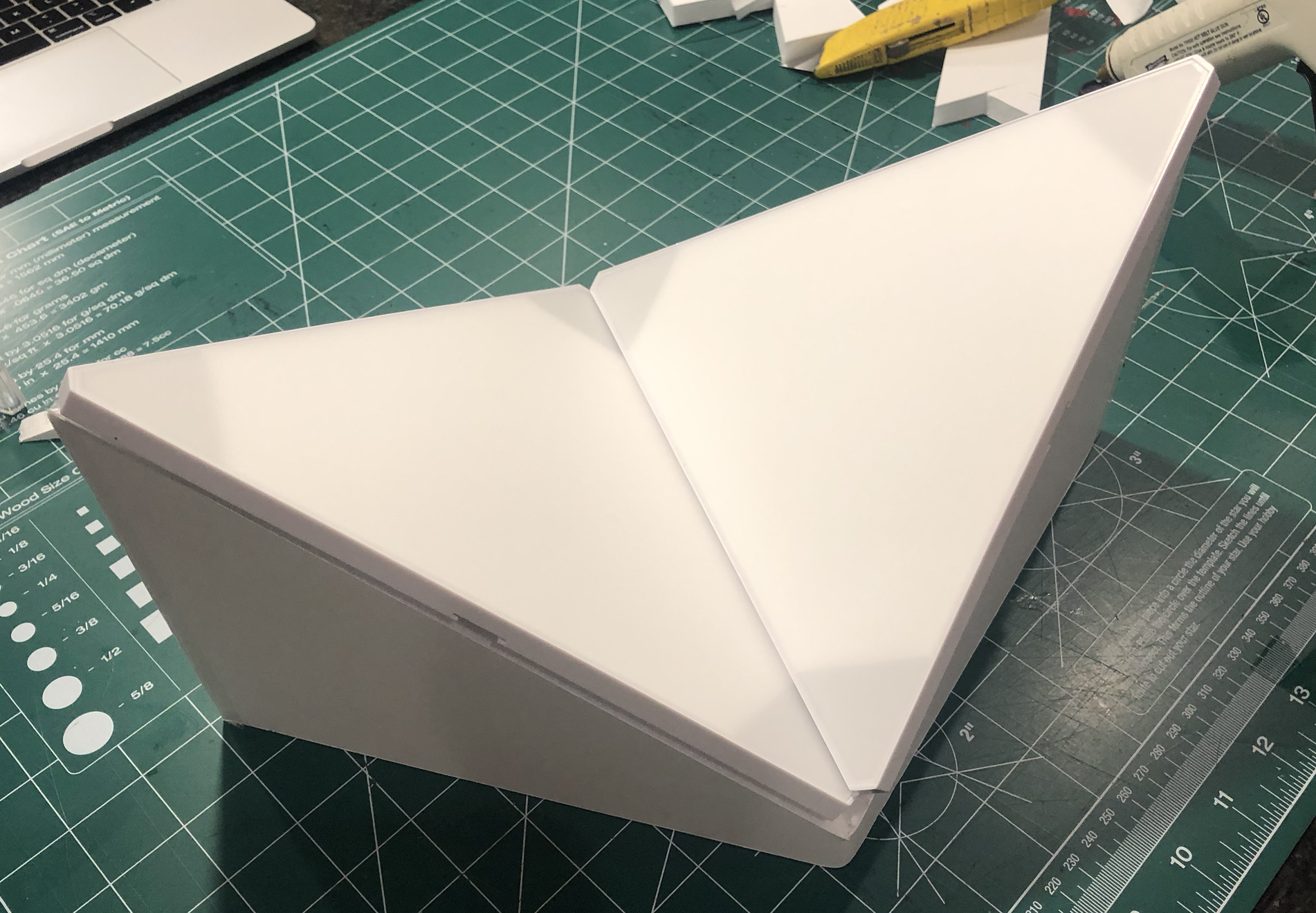Art and geometry - Building the Auth0 Logo with Nanoleaf Panels - Part II
Now that the basic design is ready, I need to build a base for each light panel. Not every supporting parallelogram needs to be the same. They all need to be the projected shape, but I can vary the height and even “convexity” to make an interesting installation.
I decided to use foam board to model as the base material because they are robust and super easy to work with. These will also allow me to hide the cables that eventually I will have to solder across non-adjacent triangles. Fortunately, nanoleafs ships flexible connectors and I will be using these for all interconnections.
My goal would be to minimize unions, so I need to decompose the support structure in a folding pattern. Pretty much like a (simple) origami. Here are the steps I’ve taken to compute the size of each side.
The basic construct
The 2 triangles combined would look like this:
Consider this shape below, with the left one being the projected parallelogram that makes one of the parts of the star (we need 5 of these) . The right shape shows the 3D representation of a 1/4 of the parallelogram, made up of the inclined triangle (only half):
Some facts:
β is the angle we computed in the previous post which turns out to be ~37.3°.
Also, just for reference:
ADB is exactly 1/2 of the full triangle. DB = L, the side of the triangle. In a nanoleaf, this is ~25 cm. AB = L/2 (it is exactly 1/2 of the side of the original triangle and this 1/2 of DB). With L = 25cm, AB = 12.5cm
What we need is the size of the segments DC and CB.
For DC we can combine a few terms to get:
For CB, it is easier as the α angle is known (54°) so:
With L = 25cm, then this results in:
- DC = ~13cm
- CB = ~21cm
The resulting template for our “origami” is then:
The first example is a “concave” support, the second is “convex”, and the third a “saw” version and the last one just one with a different height. All variables I can use to make the design more interesting.
The result
Here’s the first example I crafted. All made of foamboard.

Next steps
4 more!
Credits
The math formulas are rendered with Codecogs
